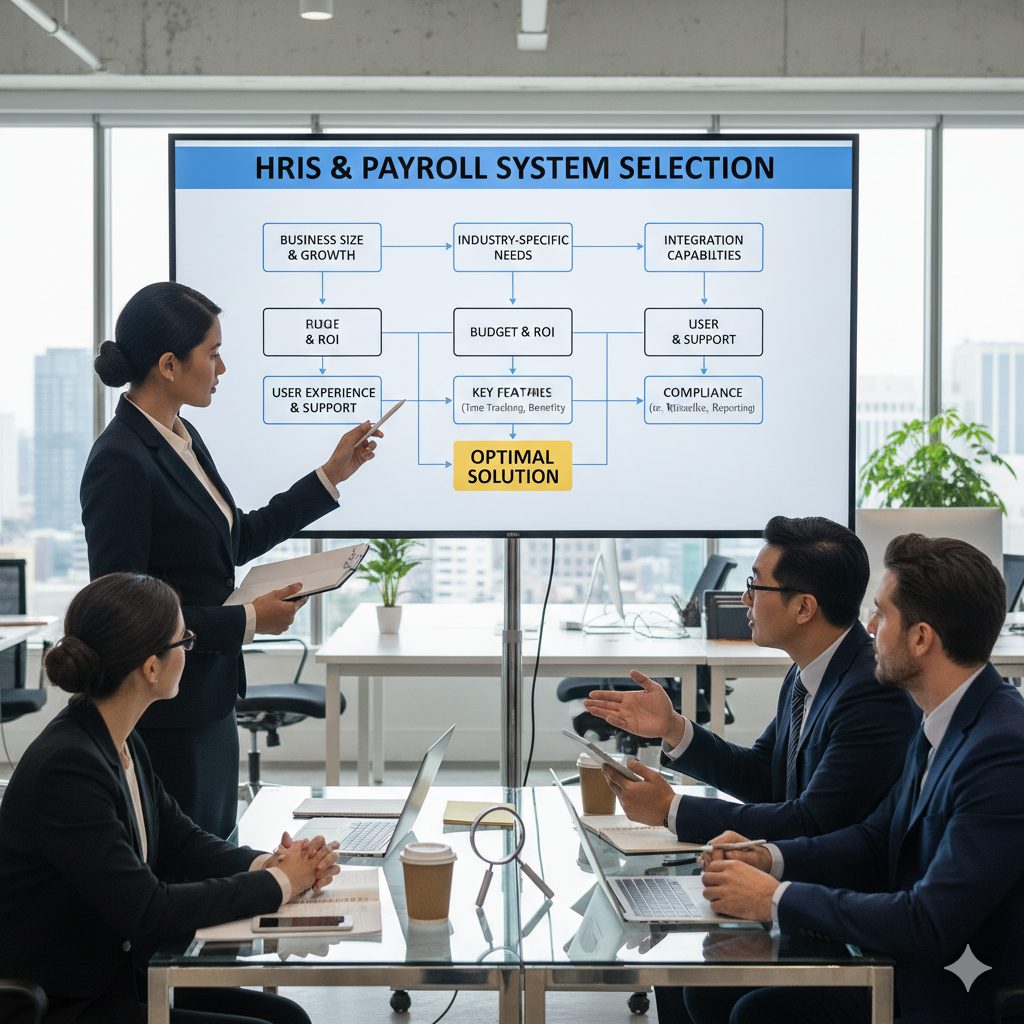Address
Kaypian, San Jose Del Monte City, Bulacan Philippines
Work Hours
Monday to Friday: 8AM - 6PM
Weekend: 10AM - 5PM
Address
Kaypian, San Jose Del Monte City, Bulacan Philippines
Work Hours
Monday to Friday: 8AM - 6PM
Weekend: 10AM - 5PM


Integrated HR. Accurate Payroll.


Integrated HR. Accurate Payroll.

In today’s fast-moving business world, managing people efficiently is no longer just about tracking attendance or processing salaries. It’s about integrating all your HR and payroll operations under one roof. That’s where an HRIS (Human Resource Information System) and payroll system come in.
Choosing the best HRIS and payroll system can save time, reduce errors, and empower your HR team to focus on strategy instead of paperwork. But with dozens of options in the market, how do you identify which one truly fits your business?
Let’s explore the key factors that help you select the most effective system for your organization.
Before diving into selection, it’s important to understand what these systems actually do:
Modern platforms combine both into a single HRIS and payroll software, offering automation, analytics, and seamless integrations.
Every business is unique, so the best HRIS system for a large enterprise might not be suitable for a growing startup. Begin by asking:
Document these needs before you start evaluating vendors. This step ensures you focus on solutions that match your workflow, not the other way around.
When comparing HRIS and payroll systems, check for these core features:
✅ HRIS Features
💰 Payroll Features
A truly effective system should automate both HR and payroll functions, helping you eliminate repetitive work.
A powerful system is useless if your HR team finds it difficult to use. Look for:
Request a live demo from vendors to test navigation and usability. A system that’s easy to use will ensure faster adoption across your organization.
Since HRIS and payroll systems store sensitive employee information, data protection must be a top priority.
Ensure the platform complies with:
Also, check if the vendor offers audit logs and access tracking to prevent unauthorized usage.
Your business will grow, and your HRIS must grow with it. Choose a system that allows:
A scalable HRIS ensures long-term value and avoids costly system replacements later.
A reliable vendor should provide:
Do your research — read online reviews, check testimonials, and ask for references before signing any contract.
Price shouldn’t be your only deciding factor, but it’s important to understand what you’re paying for.
Compare:
The right HRIS and payroll system should save more money in reduced manual work and compliance risks than it costs to implement.
Always take advantage of free trials or pilot programs. Testing in real business scenarios helps you evaluate:
Get feedback from HR, finance, and IT teams before final approval.
Finding the best HRIS and payroll system for your business doesn’t have to be overwhelming. Focus on your core needs, essential features, usability, security, and scalability. The right choice will streamline HR operations, improve employee satisfaction, and free up time for strategic decision-making.
Investing in the right HRIS and payroll system isn’t just about technology — it’s about empowering your people.